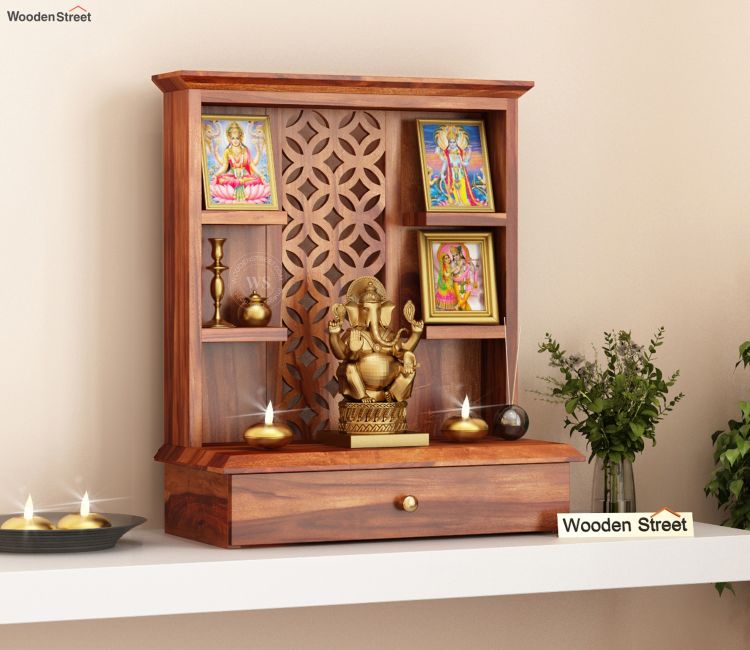Creative Mandir Design for Home That Matches Your Decor

A mandir, or home temple, is more than just a place for prayer. It’s a sacred space that brings peace, positivity, and spiritual grounding to your living environment. As homes become more modern in design, homeowners are now looking for mandir styles that blend seamlessly with the overall interior theme. This is where the importance of a creative mandir design for home becomes evident. A well-thought-out design not only serves your spiritual needs but also elevates the aesthetics of your space.
The Evolving Concept of Mandir in Modern Homes
Traditionally, mandirs were separate rooms or dedicated corners with heavy wooden structures and intricate carvings. But with changing lifestyles and space limitations, the concept of mandir design for home has also evolved. Today, people prefer compact yet elegant designs that can fit into smaller spaces without compromising on spiritual essence or design quality.
Modern mandir designs focus on clean lines, balanced proportions, and materials that complement the rest of the home. From wall-mounted units to minimal floor-standing structures, the range is diverse and flexible, making it easier to integrate into different interior themes.
Finding Harmony Between Mandir and Decor
Creating a mandir that matches your home decor requires attention to detail. The goal is to maintain spiritual sanctity while ensuring that the design does not look out of place. To begin with, the color scheme of the mandir can reflect the tones used in your living room, bedroom, or hallway where it’s placed. If your decor leans towards soft neutrals, choosing a mandir design in similar shades of beige, ivory, or light wood can maintain consistency.
Similarly, the choice of material plays a vital role. For homes with modern wooden furniture, a wooden mandir offers a sense of continuity. In contrast, homes with metal accents may benefit from mandirs with brass inlays or metallic detailing, allowing the structure to resonate with existing elements in the room.
Placement Ideas That Complement Interiors
The placement of your mandir is essential not just from a vastu point of view but also to ensure it complements the decor. In compact apartments, mandirs are often placed in living rooms, passages, or even integrated within wall units. To maintain a unified look, consider using mandir panels that mimic the texture and finish of your existing furniture.
For homes with larger areas, a dedicated nook or alcove with an arched frame can offer both visual separation and decorative appeal. Pairing this with soft lighting, like recessed LED lights or wall-mounted lamps, enhances the sacred feel while adding a stylish touch to your interiors.
Blending Traditional and Contemporary Elements
The best mandir design for home is one that blends traditional craftsmanship with contemporary sensibilities. You can include elements like jaali (lattice) patterns, hand-carved panels, or temple bells in a modern framework to bring in cultural significance while keeping it visually appealing. A mandir with a blend of traditional motifs and minimalistic structure can act as a beautiful fusion point between the old and new.
This approach works well in homes that have a mix of ethnic and modern decor. The mandir becomes a focal point, not just because of its purpose, but also because of its ability to tie different design styles together.
Customization According to Space and Need
Every home is unique, and so should be the mandir within it. Customization is key to ensuring that the mandir fits your space, preferences, and spiritual practices. Some prefer open shelves for idols, while others want closed cabinets for a cleaner look. The number of drawers for storing puja items, the height of the platform, or the addition of a backlit panel can all be tailored to meet your specific needs.
Customizing your mandir design for home also allows you to work with constraints such as sloped ceilings, narrow passages, or unused corners, turning them into purposeful prayer areas that add beauty and functionality to your interiors.
Enhancing Mandir Spaces with Decor Accessories
To further integrate the mandir into your home’s decor, consider using accessories that enhance the overall design. Simple add-ons like a matching floor rug, metallic diyas, or subtle artwork can make the space more inviting and in sync with the surrounding aesthetics. Even the selection of idols and frames, if kept consistent with your decor’s color and material palette, can contribute to a harmonious look.
Another subtle but powerful way to elevate your mandir space is through ambient lighting. A soft warm glow can bring a tranquil and divine atmosphere, while decorative hanging lamps or lanterns can double as statement pieces.
Final Thoughts
A well-designed mandir not only fulfills your spiritual needs but also becomes an extension of your home’s personality. Whether your home has a minimal modern vibe or a rich traditional look, there’s always a way to design a mandir that fits perfectly. The key lies in choosing a mandir design for home that balances form and function while complementing the existing interiors.
By giving thought to materials, placement, customization, and decor harmony, you can create a prayer space that brings both aesthetic charm and divine energy into your home. A creative mandir design for home does not just reflect your faith but also your style.


